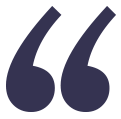
Interview
We sat down with Jean-Claude Ercolanelli, Siemens’ new Senior Vice President of Simulation and Test Solutions to find out more about him, and his views on the future of Computer Aided Engineering.
Let’s start with the most obvious questions who are you, and how did you get here? Ok, then let’s start. I’m 55 years old, I’ve been married for 29 years, and I have two grown-up children. My background is in mechanical engineering and non-linear mechanics, I’m also a graduate of the INSEAD business school. I’ve been actively involved in CAE business for more than 30 years, most of that time working at various independent software vendors - starting at Framasoft, ESI Group, Ansys and then CD-adapco, who were eventually acquired by Siemens. Which is how I got here; it may seem as if I got here by accident .
When I first started in CAE, I worked in a technical support role, and I really enjoyed helping other engineers solve difficult engineering problems using the tools that I was supporting. I carried that through a spell in pre-sales, in which I helped inspire engineers to take the next steps on their simulation journey. And I’ve carried it on ever since, I’m still inspired by helping engineers use engineering tools in the best way possible to solve problems, and enable innovation that matters in their products, in their own industries. It sounds like a cliché, but I like helping other people. After all, engineering is a vocation, and I think that most people get into it because they genuinely want to contribute towards making the world a better place.
What keeps you interested and inspired? I have a burning desire to see simulation solutions being used by every engineer, installed on every piece of hardware equipment. Because I strongly believe in the value of simulation and analysis in engineering, whether that’s software, hardware or services, I think it’s the lifeblood of innovation. Since the 1970s CAE has had a massive impact on how we live, how we travel, how we communicate and connect with one another, and increasingly how we can be cured. If you look carefully you will see the impact of simulation in every facet of our lives.
That goes beyond improving, the performance and durability of the products we use every day. Simulation and test solutions occupy a prominent position in the fight against climate change, contributing to the reduction of greenhouse gas emissions, reducing total material use and waste and increasing energy efficiency and operational performance of the product. Simulation and test solutions are also key in improving and accelerating the safety in all types of industries, whether in transportation with more reliable vehicles and continuous advances in autonomous and driving assistance systems, or in the medical and pharma field with more precise devices and faster drug development and their production processes. So, in the end, it helps to make the world a better place to live in.
The climate change question is a huge one, isn’t it? One of the things that I am most proud of is the way in which we have helped many industries to reduce their carbon footprint. I realize that we still have a long way to go, but if global economies are going to meet their 2030 and eventually 2050 decarbonization targets, they can only do that through the increased use of simulation and analysis solutions.
That includes the obvious things, such as energy savings through enabling better aerodynamic, and hydrodynamic performances, drag reduction that decreases the consumption of fossil fuels, but also through transformative technologies such as electrification and carbon-capture units. This is a complex multi-faceted problem that represents the greatest engineering challenge that our species have ever faced. If we are going to avoid the catastrophic consequences of climate change, we need to rapidly increase our rate of innovation, that’s only going to be possible through the extensive use of engineering simulation and tests.
You said earlier that you have a burning ambition to see “CAE simulation being used by every engineer, installed on every piece of hardware equipment.” Is that something we can realize during your tenure at Siemens? Absolutely yes! I think it’s essential, and it will be enabled by the rapid evolution of technology. The mobile phone that I am carrying in my pocket is millions of times more powerful than the guidance computer for the Apollo missions. In terms of processing power, the latest smartphone generation has more processing power than the largest supercomputer in the world when I first started working in engineering simulation in the 1990s. So, the technology already exists that will allow us to embed engineering simulation into products and devices. I recommend everyone keeps a close eye on how executable digital twins are progressing and spreading within the products.
I think that we’re also at a stage where AI and machine learning are beginning to change the way that we think about simulation and analysis. So, rather than just performing a handful of physics-based simulations we are also complementing this information with test and operating data, navigating them using artificial intelligence machine learning and physics informed neural networks. This means that we will be able to accelerate design performance predictions and deliver them faster than ever before, lowering the barriers to make more informed design decisions with confidence earlier, and at the same time democratizing the use of CAE.
You’ve worked for a lot of CAE companies, what is different about Siemens? What I like most about working for Siemens is that they do not have an attitude of “racing for profitability”. Instead, we have a culture of professional excellence, in which we put the success of our customers first in everything that we do. I’m sure that some of our competitors would say that they do the same thing, but my impression is that it is more explicit here because it’s in our core values. And I think that we have demonstrated that if you focus on customers first, then commercial success almost always follows. Because we have always put them first, our customers know they can count on us to deliver what they need in order to do their work more effectively. Many of our customers are very loyal to us, which means that we can work together over long periods of time to help them realize their own engineering ambitions.
So finally, enough about work, what do you do to relax? I read a lot; you might say that I’m an obsessive reader. I don’t really listen to podcasts or audiobooks; I need the information to enter through my eyes rather than my ears. I’m a big fan of economic journals, as well as business management books. I also try to keep on top of the new developments and trends in industry, and so I read a lot of industry-specific publications, especially those to do with circular economy, energy, transportation and electrification. I’ve just finished two books about AI and I’m currently feeling very inspired by a book called “Dreams and Details” which is about reinventing yourself when in a position of strength by empowering the members of your team.
My guilty secret is that I love comic books, American, French and Belgian ones mainly, but also Japanese manga. I got into those through my children, but I travel a lot to Japan and it’s really helped me to understand the culture and engage with Japanese colleagues and customers, talking about something that we both really enjoy.
I’m also a recent convert to running, during lockdown I’ve been running 60km a week, which is good thinking and relaxation time - I highly recommend it.

